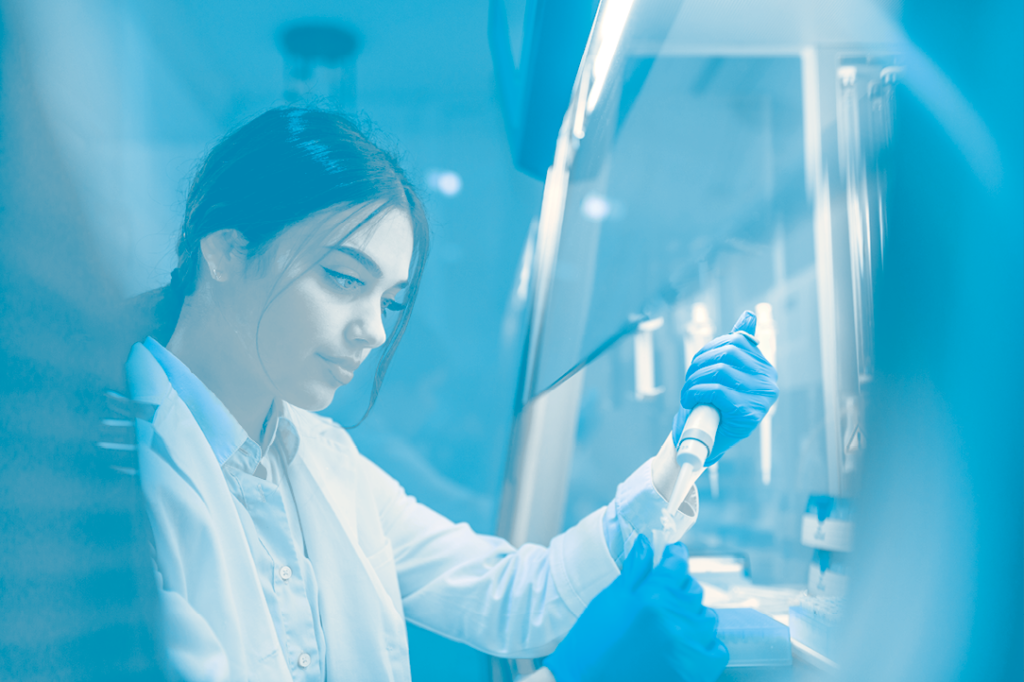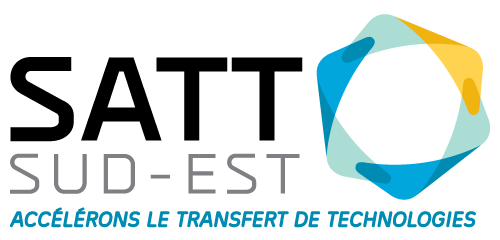
« L’axe santé, au-delà des thérapies, du diagnostic et du dispositif médical, s’étend au sport et bien-être et cible des résultats de recherche à fort potentiel de transfert.
est challengé par les besoins marché ; et nous réalisons une veille ciblée, conduisons des Appels à Manifestation d’Intérêt, et consultons des experts académiques et industriels. Le projet « Prostate cancer antisens » est une approche originale utilisant des ADN synthétiques thérapeutiques pour bloquer une cible exprimée dans le cancer de la prostate ; ce projet est cofinancé par Inserm Transfert. Le sous-axe sport et bien-être porte de belles perspectives dans le cadre de Marseille-Provence Capitale Européenne du Sport en 2017. »
PROJETS DE MATURATION
sCD146 Biomarqueur Implantatoire FIV Des embryons de compétition pour parents infertiles
C’est quoi ? Un biomarqueur de sélection d’embryons présentant les meilleurs potentiels d’implantation.
Pour quelle application ? Améliorer les chances de succès des fécondations in vitro.
Qui l’a inventé ? Laboratoire d’Histologie-Embryologie-Biologie de la Reproduction, Laboratoire d’Immunologie de La Conception, Laboratoire de Physiopathologie de l’Endothélium (Inserm U1076), AP-HM, CHU de Nîmes, Université de Montpellier
Qui y a participé ? Aix-Marseille Université, Inserm, AP-HM
Etat de Maturation : Validation industrielle
+ Des contrats de co-maturation et de sous-licence ont été signés avec la société Diasys Technologies, filiale du Groupe Diasys Diagnostics Systems (Allemagne), leader du domaine du diagnostic.
dendriTAC – Nanoémulsions pour détruire des tumeurs cancéreuses
C’est quoi ? Utilisation de nanogouttes de perfluorocarbures stabilisées par des dendrimères appelés « dendriTAC » comme outils de ciblage tumoral.
Pour quelle application ? L’application cible consistera à traiter les tumeurs cancéreuses en délivrant localement des principes actifs.
Qui l’a inventé ? L’Institut des Biomolécules Max Mousseron (IBMM UMR 5247a), Laboratoire d’Imagerie Biomédicale (LIB UMR-S 1146, UMR 7371), Laboratoire Physique Statistique (LPS UMR 8550)
Qui y a participé ? L’Université d’Avignon et des Pays de Vaucluse, CNRS, UPMC, Inserm, Université Montpellier 1 et 2, ENSCM, ENS, Université Paris Diderot et Université Paris V
Etat de Maturation : Validation expérimentale
BISE – Innovation en imagerie IRM pour mieux voir la myéline
C’est quoi ? BISE, une technique d’imagerie quantitative in vivo de la myéline, la substance qui sert à isoler et protéger les fibres nerveuses.
Pour quelle application ? Diagnostiquer des pathologies démyélinisantes et évaluer des thérapies pour la sclérose en plaque et d’autres affections du système nerveux central.
Qui l’a inventé ? Le Centre de Résonance Magnétique Biologique et Médicale (CRMBM)
Qui y a participé ? Aix-Marseille Université, CNRS, Institut Carnot STAR
Etat de Maturation : Validation clinique en cours
+ Des contrats de co-maturation et de sous-licence ont été signés avec la société Diasys Technologies, filiale du Groupe Diasys Diagnostics Systems (Allemagne), leader du domaine du diagnostic.
Segmentation Supervisée d’Images IRM Musculaires – Mieux diagnostiquer les maladies musculaires par imagerie
C’est quoi ? Un logiciel de traitements d’images pour la segmentation supervisée d’IRM musculaire.
Pour quelle application ? Le suivi de maladies musculaires, notamment la sarcopénie (diminution de la masse musculaire chez les seniors) et l’amélioration de l’entraînement sportif et la détermination de l’efficacité des stratégies thérapeutiques.
Qui l’a inventé ? Le Centre de Résonance Magnétique Biologique et Médicale (CRMBM)
Qui y a participé ? Aix-Marseille Université, CNRS, Institut Carnot STAR
Etat de Maturation : Validation expérimentale
Vertiges : Un traitement pour les problèmes d’équilibre liés à l’oreille interne
C’est quoi ? Un potentiel candidat médicament anti-vertigineux.
Pour quelle application ? Traiter les symptômes d’une pathologie qui touche une personne sur trois sur les atteintes vestibulaires.
Qui l’a inventé ? Le Laboratoire de Neurosciences Intégratives et Adaptatives (LNIA)
Qui y a participé ? Aix-Marseille Université, CNRS
Etat de Maturation : Consolidation de la preuve de concept
Segmentation Supervisée d’Images IRM Musculaires – Mieux diagnostiquer les maladies musculaires par imagerie
C’est quoi ? Un logiciel de traitements d’images pour la segmentation supervisée d’IRM musculaire.
Pour quelle application ? Le suivi de maladies musculaires, notamment la sarcopénie (diminution de la masse musculaire chez les seniors) et l’amélioration de l’entraînement sportif et la détermination de l’efficacité des stratégies thérapeutiques.
Qui l’a inventé ? Le Centre de Résonance Magnétique Biologique et Médicale (CRMBM)
Qui y a participé ? Aix-Marseille Université, CNRS, Institut Carnot STAR
Etat de Maturation : Validation expérimentale
Diagnostic Athérosclérose : Centre Méditerranéen de Médecine Moléculaire (C3M, Université Nice Sophia Antipolis, Inserm, U1065), Institut des Maladies Métaboliques et Cardiovasculaires (I2MC, Inserm, UMR 1048)
Développement d’un biomarqueur pour prévenir un premier infarctus dans des populations prédisposées au Syndrome Coronarien Aigu (SCA) avant la rupture de la plaque d’athérome.
Méthode ISA et réencodage virus : Laboratoire Émergence des Pathologies Virales (EPV, Aix-Marseille Université, Inserm, IRD, U190)
Nouveau procédé d’obtention de vaccins à partir de virus atténués. Le programme de maturation se focalise sur des candidats vaccins à usage vétérinaire, avec une évaluation de leur rendement de production et de leur capacité d’infection.
Pluripotent cell differentiation process : Laboratoire Génétique Médicale et Génomique Fonctionnelle (Aix-Marseille Université, Inserm, UMR_S910)
Le programme de maturation doit permettre de fournir des modèles prédictifs de différents types de cellules neuronales à partir de cellules souches pluripotentes induites humaines. L’objectif est de proposer des tests de non toxicité de candidats médicaments ou de valider leur efficacité sur des modèles neurodégénératifs humains.
Prostate Cancer Antisens : Centre de Recherche en Cancérologie de Marseille (CRCM, Aix-Marseille Université, CNRS, Inserm, U1098)
Le projet a pour objectif de démontrer l’efficacité d’ADN synthétiques thérapeutiques interagissant avec un ARNm codant pour une protéine exprimée dans le processus tumoral. Ce programme a pour but de ralentir le processus tumoral et de diminuer la résistance aux traitements hormonaux et chimiothérapeutiques.
M-CSF : Centre d’Immunologie Marseille-Luminy (CIML, Aix-Marseille Université, CNRS, Inserm, U6102)
Traitement préventif et curatif destiné à renforcer et accélérer la restauration du système immunitaire de patients immunodéprimés lors de greffes de cellules souches. Ce traitement permet d’empêcher le développement d’infections fongiques, virales ou bactériennes inhérentes à ce type de transplantation.
Dengue antivirals : Laboratoires Architecture et Fonction des Macromolécules Biologiques (AFMB, Aix-Marseille Université, CNRS, UMR 7257), Émergence des Pathologies Virales (EPV, Aix-Marseille Université, Inserm, UMR_S190)
Suite d’un premier projet, cette maturation a permis de valider l’activité des molécules antivirales développées et de sélectionner les meilleurs composés antiviraux actifs sur les 4 sérotypes du virus de la Dengue comparativement à des molécules développées, ou en cours de développement, par des sociétés pharmaceutiques ou biotechnologiques.
« L’accompagnement de la SATT Sud-Est, dans le cadre du projet de maturation PROMETHEUS, a permis de mettre en application les résultats de mes travaux de recherche par le développement d’un dispositif d’imagerie innovant. La SATT Sud-Est a soutenu financièrement le projet et son équipe a aussi contribué de façon importante avec des idées originales. Je souhaite que cette relation entre la recherche et le développement technologique puisse se poursuivre pendant les années à venir. »
« En ma qualité de directeur du laboratoire, j’ai particulièrement apprécié les interventions de la SATT dans mon laboratoire. Les personnels ont été favorablement sensibilisés par un discours clair, et ils ont bien compris que la SATT représentait un réel soutien à la valorisation de leurs compétences. Deux déclarations d’invention ont été déposées (12 chercheurs au LP3) suite à ces actions. En ma qualité de responsable de projet, j’ai beaucoup apprécié l’efficacité du travail de la SATT qui a effectué la demande de brevet et l’étude de marché, et m’a soutenu avec un projet de pré-maturation. Ce soutien nous permet aujourd’hui de valider notre idée. L’interaction avec l’ingénieur de la SATT est très constructive et enrichissante, et elle va bien au-delà du simple soutien financier. »
« Nous avions identifié des molécules inhibitrices de la polymérase du virus de la dengue, efficaces dans un contexte cellulaire, c’est-à-dire de potentiels antiviraux. Travailler avec la SATT nous a permis de franchir plusieurs étapes importantes dans ce programme, avec la définition d’une stratégie de propriété intellectuelle, concrétisée par le dépôt de deux brevets, et de bénéficier de compétences renforcées en chimie médicinale. Nous recherchons maintenant des partenaires industriels, avec dans ce cas aussi le soutien des experts de la SATT. »
Passer de l’invention à l’innovation est un émerveillement. Et nous avons de la chance, c’est notre métier.
Découvrez comment la SATT Sud-Est accélère le transfert de technologies en fédérant les acteurs de la recherche et de l’entreprise. Du brevet à la licence d’exploitation, en passant par la preuve de concept, la SATT Sud-Est s’impose dans les Régions Sud et Corse comme un acteur incontournable de l’innovation.



Siège
Le Silo, 35 Quai du Lazaret, CS 70545
13304 Marseille Cedex 02
Projet financé avec le concours de l'Union Européenne avec le Fonds Européen de Développement Régional.
